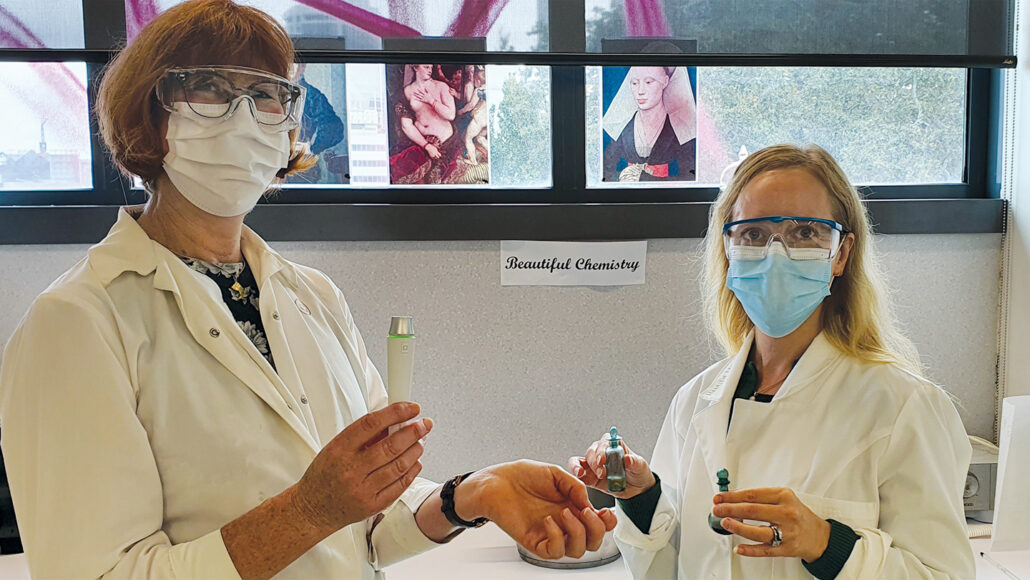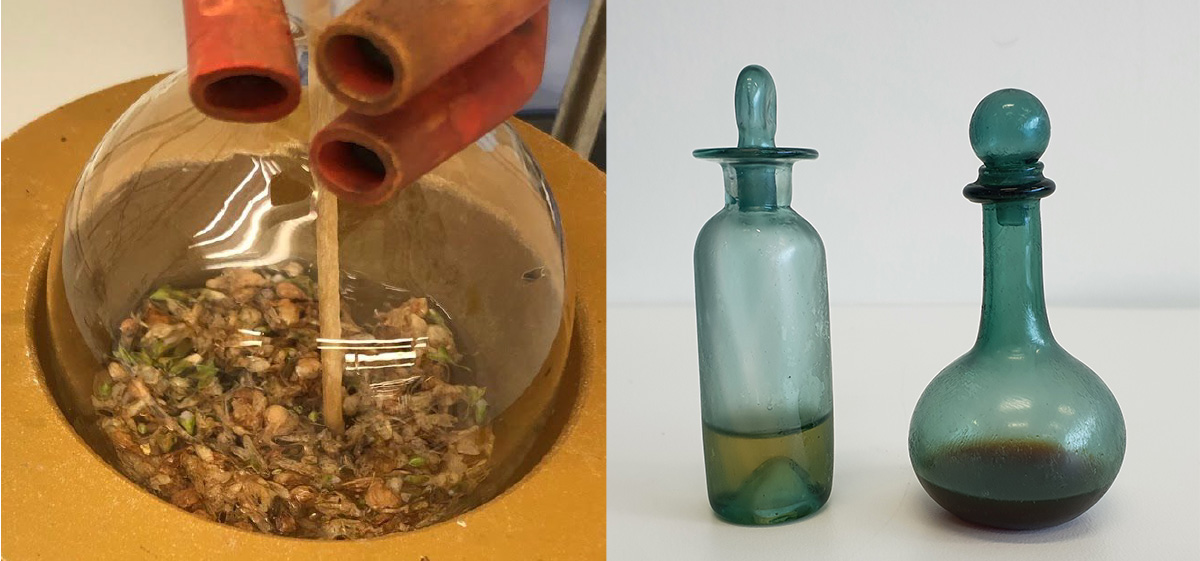Recipes for modern beauty products aren’t so modern after all
Renaissance-era cosmetics called for similar ingredients to today’s personal-care products

Chemist Michel Nieuwoudt (left) and art historian Erin Griffey (right) both work at the University of Auckland in New Zealand. These two have teamed up to uncover the science behind cosmetics used around 500 years ago.
E. Griffey, M. Nieuwoudt
Art historian Erin Griffey is a bit of a beauty geek. “I’m one of those people who reads the backs of beauty products,” she says. That’s why her research for a book about beauty culture in Renaissance Europe gave Griffey a sense of déjà vu. She noticed that many ingredients in beauty recipes from the 1500s to the 1700s also appear on modern beauty packaging.
For instance, many of today’s skin-hydrating mists contain rosewater. And sulfur is found in some acne creams. These and other components of modern beauty products are mentioned in Renaissance documents like collections of cosmetic recipes and medical texts.
Such similarities between beauty products old and new offer clues about how Renaissance-era people used their products and how those products worked. But ingredient overlap does not provide the whole story. That’s because the ancient recipes also often list bizarre or even dangerous ingredients. Bile acids, for example. Or calves’ hooves. Or the poisonous bryony plant. Griffey wondered why and how Europeans of this time used such strange concoctions.
Following the so-called Dark Ages, the Renaissance was a time during which Europe underwent a cultural, artistic and social rebirth. To understand the cosmetics of this time, Griffey decided to re-create their recipes. For help, she turned to her colleagues at the University of Auckland in New Zealand. And that’s how the Beautiful Chemistry Project was born.
“Sticky” science
The team started with what Griffey calls “sticky recipes.” These potions aren’t literally sticky. But they are found in many sources throughout the Renaissance period. That is, they stuck around for a while. Such recipes include rosemary flowers in white wine and myrrh powder with egg white. They also include recipes that called for mixing the velvety coat of newly grown deer antlers with bean flour.
Following these recipes is not as simple as cracking open a cookbook. Renaissance-era instructions tend to be vague and varied. So, chemist Michel Nieuwoudt and her team has been experimenting with ways to combine ingredients and the amounts of each ingredient used. Meanwhile, Griffey is searching various sources for clues to ingredient types and their ratios.
Take, for example, a recipe for rosemary flowers in white wine. “We knew we could not re-create it exactly as is,” Griffey says. “We do not have access to the rosemary plants that grew 500 years ago or the wines and whatever their chemical makeup was.” But experiments “enabled us to get closer to an approximation.”

Nieuwoudt and her team boiled rosemary flowers in round-bottom flasks. Each flask was filled with a different solution. One held sweet white wine. Another had dry white wine. The third contained ethanol (plain alcohol) in water. And the last was filled with the alcoholic drink aqua vitae.
Once the researchers filtered out the flowers, they inspected what was left. The team did this using two methods. One was gas chromatography (Kroh-muh-TAH-grah-fee). The other was mass spectrometry (Spek-TRAH-muh-tree). Both techniques create an inventory of the chemicals that make up some substance.
The rosemary in wine mixtures were found to contain several compounds that are common in today’s skin-care products. These included soothing camphor; linalool, a fragrant alcohol; and eucalyptol (Yu-kuh-LIP-tawl), which can bring down inflammation.
The Renaissance-era recipe stated the potion would “make the face fair.” Nieuwoudt’s findings suggest it might do that by toning and moisturizing the skin.
Ancient makeup made modern
The team has also made progress unlocking the secrets of myrrh powder and egg whites. Experiments suggest that myrrh draws out proteins from egg whites. The egg whites in turn extract resins, sugars and volatiles from the myrrh. (Volatiles are chemicals that evaporate easily and may release fragrant aromas.)
What results in a serum-like substance with a few useful properties. For instance, it can help fight off germs. It also can reduce inflammation. It may even promote the growth of collagen, an important protein in skin.
“It seems there’s a synergy between all of these different ingredients,” Nieuwoudt says. “This is why it works.”
The researchers still have to figure out what deer velvet and bean flour may have been done. And they have yet to tackle recipes with dangerous ingredients. But someday, the team hopes to perfect their re-creations and bring the products to drug-store shelves. These modern takes on Renaissance cosmetics would, of course, exclude any unsafe ingredients.
“I think people will want to go back to something that is natural,” Nieuwoudt says. “It’s also appealing for people to think they’re using Renaissance products.” Until then, the beauty for the researchers lies in “digging [the recipes] out and understanding them.”







